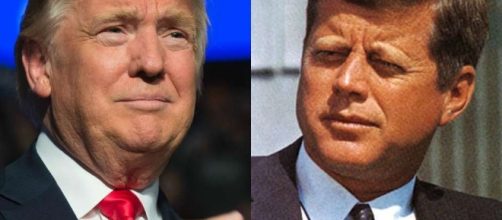One never knows what one will find when he starts researching. I planned to write something about each president's first 100 Days in office since 1960, but that was way too long for this format. Comparisons and contrasts between John F. Kennedy and Donald Trump piqued my interest during the process. It turns out that the times were reasonably similar. History tells you how one reacted, only the future knows what the other will do.
Legislative agenda
John F. Kennedy signed 27 into law, such as the one commemorating the 100th anniversary of the first inauguration of Abraham Lincoln and put former President Dwight Eisenhower back in the Army at the rank of 5-star general.
The president also signed a bill extending jobless compensation benefits for 13 more weeks.
While none of Kennedy’s legislation in his first 100 days were major laws, the laws were signed. An Executive Order JFK signed, establishing the Peace Corp, would become law in later months. By way of comparison, Donald Trump has signed 29 bills, but 15 were resolutions from Congress. Two of the laws Trump approved include the INSPIRE Women Act and Promoting Women in Entrepreneurship Act.
JFK sent 28 messages to Congress outlining his ideas of programs to halt the recession, to get the unemployed re-employed, to obtain fair housing, and to create better educational facilities. Trump has not sent proposals to Congress.
Instead, Trump sent a brief message and expected congressional leaders to do it.
Domestic front
Kennedy and Trump shared interest in economic stimulation, albeit half a century apart. The 87th Congress was not prepared to spend more than was being taken in. The deficit was already more than $5 billion and Kennedy did not think Congress would increase the limit.
The Fed refused to lower its 3.99 interest rates, unemployment had shot up to 6.2 percent by the 1960 election, and the economy was shrinking.
JFK fought the Establishment through executive orders. Federal payments and refunds were accelerated, and contracts were directed to areas with the highest unemployment. These actions, plus the additional optimism his young presidency brought with it, were enough for the economy to show signs of an upturn by April of 1961.
Trump has not had the same luck. He is at war with the media and never had a honeymoon, let alone a fantasy period in the White House. The Fed is expected to raise its rate from .75 percent, unemployment dropped from 4.8 percent to 4.5 percent in Trump’s first three months and the Census Bureau’s economic indicators are steady under this administration. Questions abound about his tax “simplification” plan, though.

